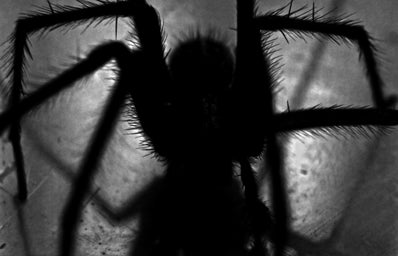“On this day, the great God of the Sun dies, and leaves his widow, the Goddess Crone, to mourn him until Yule when he will be reborn, and light will return.”
Before Halloween, with its gaudy, off-brand costumes and pillowcases full of sweets, was the Celtic Pagan festival of the third harvest – Samhain. Pronounced Sow-wen, Sah-vin, or Sam-hayne, the Gaelic translates to ‘summer’s end.’ Samhain falls on October 31st to mark the end of the Celtic calendar and the descent into the long winter nights.Samhain was originally celebrated as a pre-Christian Celtic festival of the dead across most of Europe. It marked both the beginning of winter and the end of harvest, but also the time when spirits of the dead made their way to the underworld. During this time, the veil between life and death was thin and all manner of creatures flooded the world – ghosts, fairies, and demons walked with the spirits to steal the souls of the living. Vegetables, fruits, and animals were sacrificed and bonfires lit in honour of the dead and to drive away evil spirits. With its celebration of the supernatural, the day became one of the most recognisable festivals of the year and the most important to Pagan worship.
But during the Christianisation of Europe in the first millennium A.D., missionaries sought to appropriate native worship traditions, as instructed by Pope Gregory the First. The popularity of the Pagan festival was channelled into the Christian religion; Christmas, for example, was set on the arbitrary date of December 25th because it coincided with the Pagan Yule and Winter Solstice.And so, the feast of All Saints was assigned to the 1st November with All Souls appearing the next day – the first honouring every Catholic Saint and the second to pray for the souls of the dead. While the aim of this was to lure the Celtic devotion away from the supernatural, demonising its worship and labelling Druid priests ‘Satan worshippers’, it succeeded only in lessening the status of traditional Celtic deities – the old beliefs festered quietly on. All Saints Day continued to haunt the limbo between autumn and winter, retranslated into All Hallows Eve, Hallow Evening, and then finally, Hallowe’en.
Despite the best efforts of the Church, many traditions prospered and remain to this day, quite probably because of their work.
Masks and costumes were originally worn to confuse evil spirits and keep your soul safe from theft; today, millions (from children to drunk students) dress up as witches, skeletons, and ghosts alike. Over the years, this has evolved into superheroes, punny couple outfits, and risqué-editions of every costume imaginable.
Trick or treating has several beginnings. The first is the practice of people who disguised themselves as ghoulish fiends and went door to door demanding food or threatening punishing tricks. The second is the medieval custom of ‘souling’. This entailed the poor (peasants, travellers, and spinsters) praying for or communicating with the dead in exchange for food – this, some historians argue, is where the gypsy custom of necromantic communication as a commercial practice first originated.Jack-o-lanterns find their history in Celtic Paganism, too. Folklore tells of a boy named Jack who was thrown into Purgatory for cheating the Devil and, to guide his way in the dark, carved a lantern out of a turnip. This became a tradition of Samhain and Halloween where people would alight turnips to guide lost souls on to the underworld and carve hideous faces into the vegetable to scare away evil spirits. When the Irish Potato Famine of 1846 drove Irish refugees across the sea to North America, the traditions came with them. In the US, however, turnips were difficult to crop and so Jack-o-lanterns evolved into the pumpkins we see today.
Halloween, then, represents a tie to the past, a remnant of Pagan culture that continues to influence us today. And with this article we mark the end of the Halloween season…until next year, witches!



